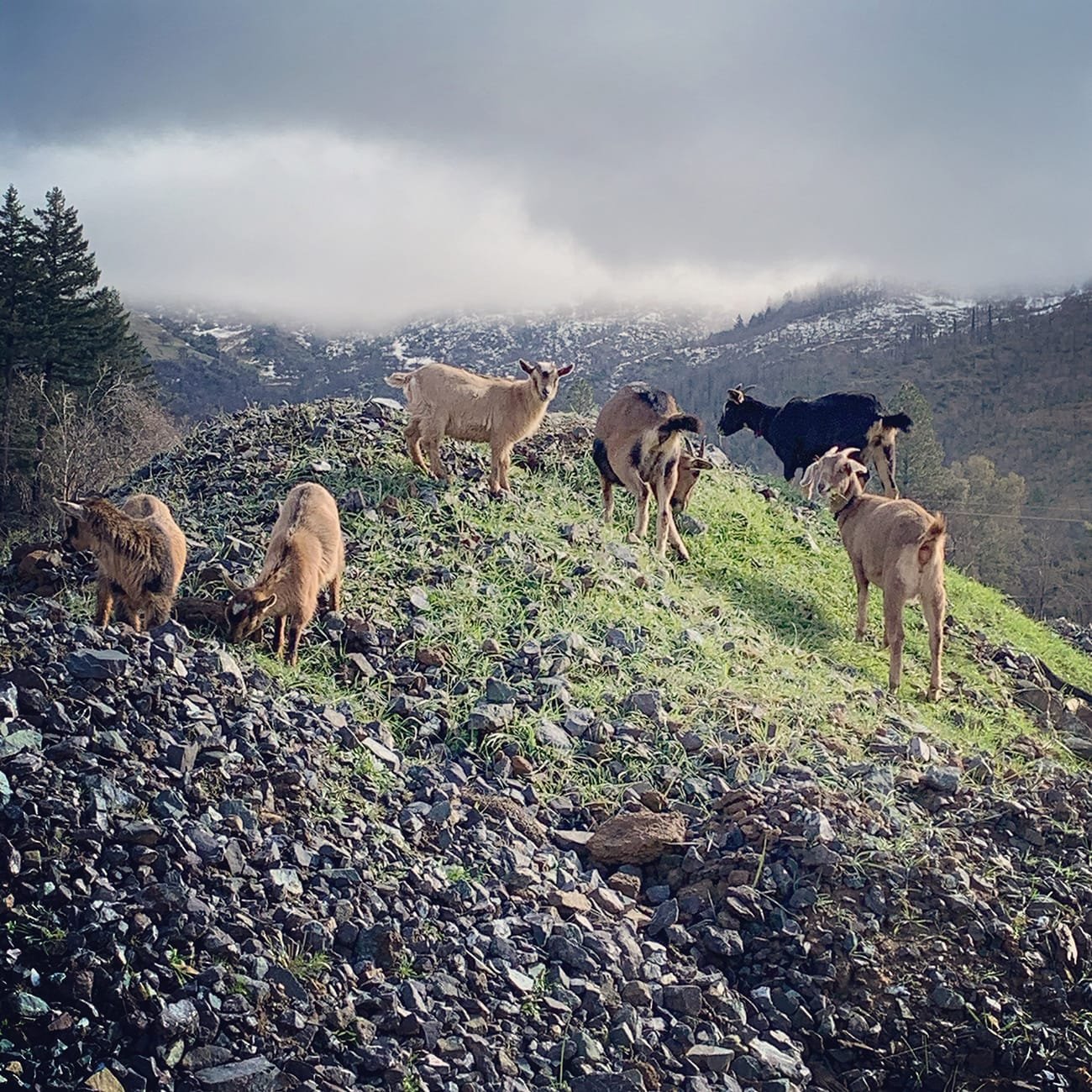The Art of Grazing
Baby goats grazing in the vineyards
The art of grazing requires a return to land based understanding and wisdom. In a modern society that is growing to be detached from the land, we are fostering a more intimate connection with the cycles and rhythms of this place. Frey Vineyards is located near the headwaters of the Russian River watershed, and we tend several hundred acres of organic and Biodynamic vines here.
Spring Arrivals
This Spring we've got baby goats, baby cows, baby lambs, baby chicks, baby bunnies, and a baby kitten in the mix at the Frey farm. Our neighbors have some adorable baby pigs that I have visited several times, too. It makes sense that this time of year when fresh, wild greens are at their lushest, is also when new life is coming forth to eat and forage. Everybody is happy frolicking through the green pastures and meadows. Every Spring when the grapes bud with new growth, we take the animals out of the vineyards and bring them to their summer foraging spots. I also enjoy preparing my garden beds throughout the Spring and giving the excess weeds, grasses, prunings, volunteers, and other edible plants, to the animals.
An enormous fresh egg
We are still learning and reclaiming the art of grazing. We keep the goats grazing along trails throughout the wilder parts of the property to maintain road access. And in every place where the animals are allowed to graze (and pee and poo), soil fertility increases. Instead of leaving animals in the same place all the time, we rotate them through different areas. This maximizes natural cycles of grazing while minimizing impact.
Anytime you leave animals in the same spot all the time, that space becomes a kind of dead zone because of the hyperaccumulation of waste products and foot traffic, along with compacted soil. Most industrial animals are, unfortunately, raised in such conditions where the art of grazing has been lost completely.
However, there are many farms attempting to make holistic rotation methods the norm again. The art of grazing is not lost! Some farms are using "holistic management" practices by grazing large herd animals. The large herd grazes, they are then followed by a poultry flock that distributes and breaks down the poo from the herd while foraging for bugs. Finally, all the animals are moved to new spots to give that land a rest so the added nutrition can be integrated into the soil.
Sheep mothers and their lambs in the vineyards
We're still experimenting with rotation patterns, and as Northern California becomes dry from June onward, we're looking at ways to create as synergistic an experience as possible for the land and animals. The goat herd, which I tend to, will happily eat the wildest greens (blackberries and tree leaves are favorites) well into the Fall when acorns (perhaps their favorite foods) become available. After the grapes are harvested, the goats will return to the vineyards where they enjoy grape "seconds" as well as various leaves from the hedgerows we have planted.
A young cow on the farm




